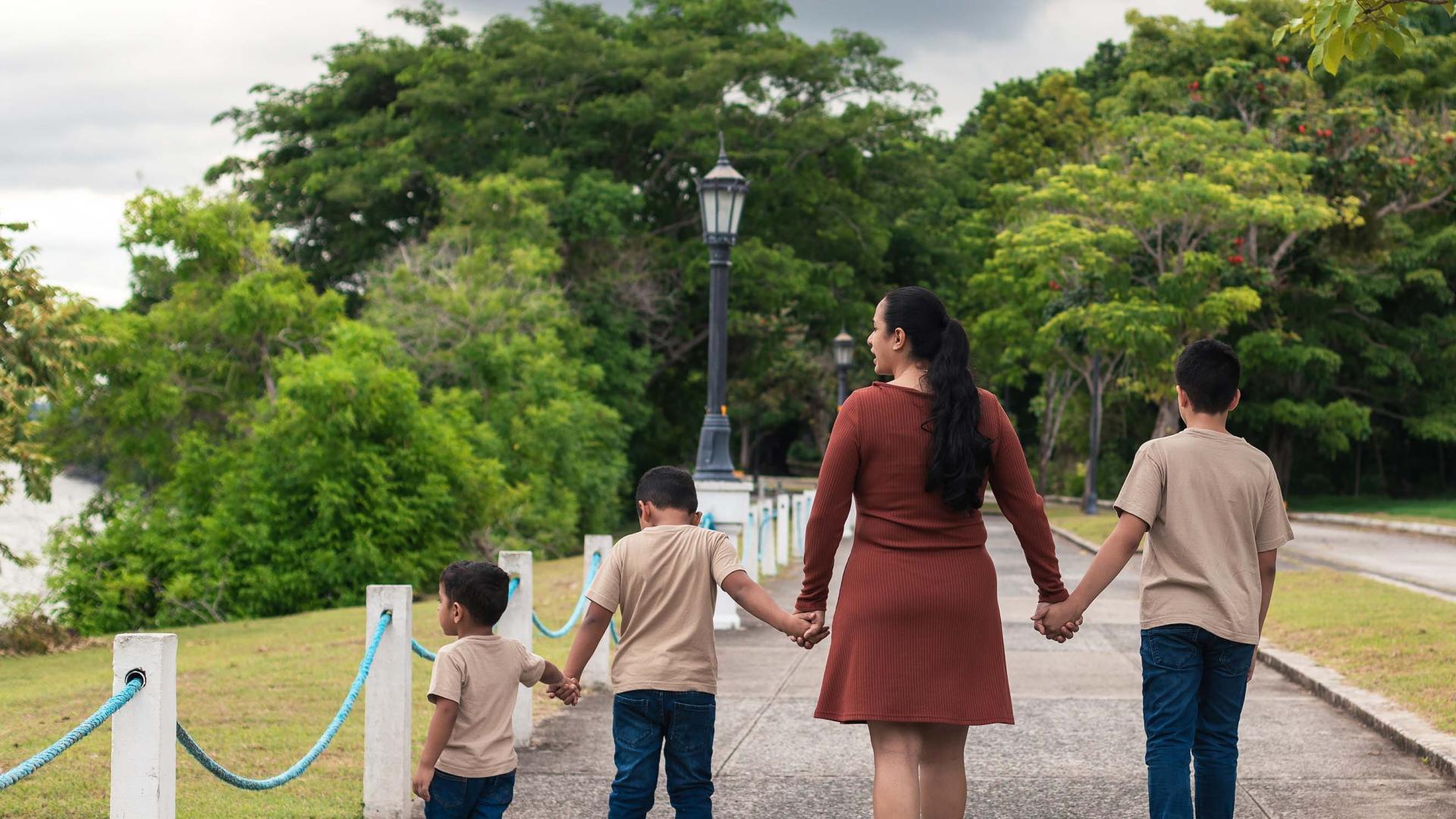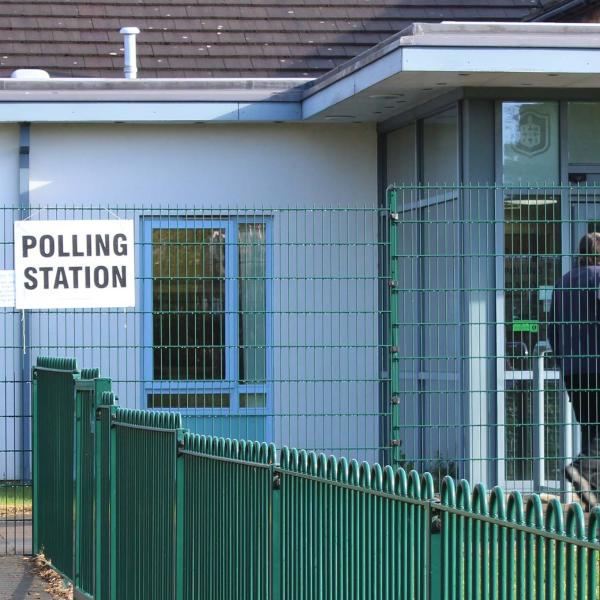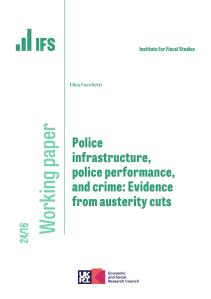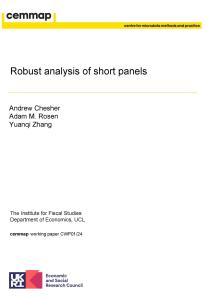Low-income families typically receive an additional £3,455 a year of universal credit (or child tax credit) for each child they have1 . But the ‘two-child limit’ means that claimants do not receive an additional amount for third or subsequent children born after 5 April 2017. This policy has been the subject of controversy, and the Liberal Democrats and Green Party have both committed to abolishing the limit in their manifestos, while the Labour Party have said they will abolish it ‘when fiscal conditions allow’. In this comment, we outline the impact of the two-child limit on household incomes and work incentives, and the public finances.
To illustrate the impact of the policy, take a lone parent with three children who lives in social rented accommodation costing £500 per month2 , and not working. Their universal credit entitlement will be made up of the basic £4,721 per year in universal credit for single adults; £6,000 to cover the cost of their housing; and – in the absence of the two-child limit – £10,365 for their children3 . On top of this, they receive £3,102 a year in child benefit, which is unaffected by the two-child limit, giving them a total income of £24,188 (without the two-child limit); they would also generally have support to cover most or all of their council tax bill. The two-child limit means they receive £3,455 less each year in universal credit, representing a 14% cut to their income and putting them into relative poverty.
Turning to the impact across the population, we find that, when fully rolled out, on average affected households will lose £4,300 per year, representing 10% of their average income and 22% of average benefit income4 . These losses are concentrated among 790,000 households (10% of working-age households with children) and would affect nearly one in five children (2.8 million). As things stand, the policy affects only 550,000 households. The difference is because there are families with three children all of whom were born before 6 April 2017; as time passes, more and more large families will have children born after that date. We estimate that 250,000 extra children will be affected by the policy next year and 670,000 extra children will be affected by the end of the next parliament. HMRC statistics show that in 2023, 50% of families affected by the two-child limit were single parents and 57% had at least one adult in paid work.
Figure 1 shows where in the household income distribution households that are affected by the two-child limit sit. For comparison, we also show the equivalent for all households with children and all households with children receiving universal credit. Unsurprisingly, the two-child limit disproportionately affects poorer households, but the figure shows that affected households are also more likely to have low income than are all universal-credit-receiving families with children. 76% of households affected by the two-child limit are in the poorest 30% of working-age households. In comparison, 63% of households eligible for universal credit with children are in the poorest 30% of working-age households.
The two-child limit has an (even more) outsized impact on children living in low-income households, as, by definition, a household affected by the two-child limit has at least three children. It affects 23% of households with children in the poorest fifth of the income distribution, but 38% of children in the poorest fifth of the income distribution.
The two-child limit also has varied impacts across families of different ethnicities. We estimate that 43% of children in households with one adult of Bangladeshi or Pakistani origin (400,000 children) would be affected by the policy when fully rolled out, compared with 17% of children in other households (2.4 million children). This reflects both these families having more children and them being more likely to be on low income.
The two-child limit would be even more targeted at the poorest households if it was not for a separate policy: the benefit cap. The benefit cap limits the total amount that a family with no adults in work can claim to £22,020 a year outside London and £25,323 a year inside London (lower amounts are applied for single adults without children). 110,000 households are not directly affected by the two-child limit as the benefit cap already limits their entitlements. Almost all these households are in the poorest fifth of households.
Figure 2 shows relative child poverty rates, defined as being in a household with an income (after housing costs) below 60% of median income, split by the number of children in the household. Since 2014–15, relative poverty rates have declined for families with one or two children, but they have increased for families with three or more children5 . Absolute poverty rates have also diverged: they have fallen for small families but remained unchanged for large families. So, in absolute terms, low-income large families are about as well off as they were in 2015, but their incomes have fallen further behind relative to other households, including small families.
The two-child limit is likely one driver of this recent increase in relative child poverty rates for larger families. However, it is not the only explanation. Other benefit cuts are likely to affect larger families more as they on average receive more of their income from benefits (the benefit cap also disproportionately affects larger families); and broader economic trends may also play a role. Nevertheless, removing the two-child limit would certainly go some way to reversing the recent increase in poverty rates for large families. We estimate that removing the two-child limit would reduce relative child poverty by approximately 500,000 (4% of all children)6 .
The two-child limit has a relatively small effect on work incentives. One statistic that helps explain work incentives is replacement rates: the household’s income if an individual was out of work as a percentage of their in-work household income. The lower someone’s replacement rate, the more incentive they have to remain in work. With the two-child limit, an average working parent with three or more children has a replacement rate of 62.1%; without it, they would have a slightly higher replacement rate of 63.0%. This average difference is small for two reasons. First, 28% of these workers are unaffected entirely, as they would not be able to claim universal credit even if they lost work, due to having more than £16,000 in assets or their partner having a sufficiently high income. Second, for 22% of these workers, the two-child limit actually increases their replacement rate, as it decreases their income when in work but does not affect them when they are out of work, as they would be benefit capped if out of work. For those who when out of work are eligible for universal credit but not benefit capped – 50% of working parents with three or more children – their replacement rate falls by 4 percentage points.
Naturally, removing the two-child limit would come at a cost. We estimate that removing the two-child limit would cost the government about £3.4 billion a year. For a sense of scale, this is equal to roughly 3% of the total working-age benefit budget; it is also approximately the same cost as freezing fuel duties for the next parliament, or cutting the basic rate of income tax by half a penny.
The indirect fiscal impacts of the two-child limit are more uncertain. Previous research has found that investments in young children can sometimes partly or even entirely pay for themselves by causing better outcomes for those children in later life. If the same is true of benefit spending in the UK, removing the two-child limit may be less costly in the long run than its up-front cost suggests. However, there is very little evidence on this issue in the UK, though ongoing IFS research is looking to study it.
Appendix
Table A1. The fiscal savings and number of children/households affected by two-child limit over time
| Financial year | Number of households affected ('000s) | Number of children affected ('000s) | Fiscal saving (£ billion, 2024/25 prices) |
|---|---|---|---|
| 2024/25 | 550 | 1960 | 2.1 |
| 2025/26 | 620 | 2200 | 2.4 |
| 2026/27 | 660 | 2330 | 2.6 |
| 2027/28 | 700 | 2460 | 2.8 |
| 2028/29 | 720 | 2540 | 3.0 |
| 2029/30 | 750 | 2630 | 3.2 |
| Full rollout | 790 | 2770 | 3.4 |
Note: Assumes full take-up of benefits and full roll-out of universal credit.
Source: Authors’ calculations using the Family Resources Survey 2022–23 and TAXBEN, the IFS tax and benefit microsimulation model.











